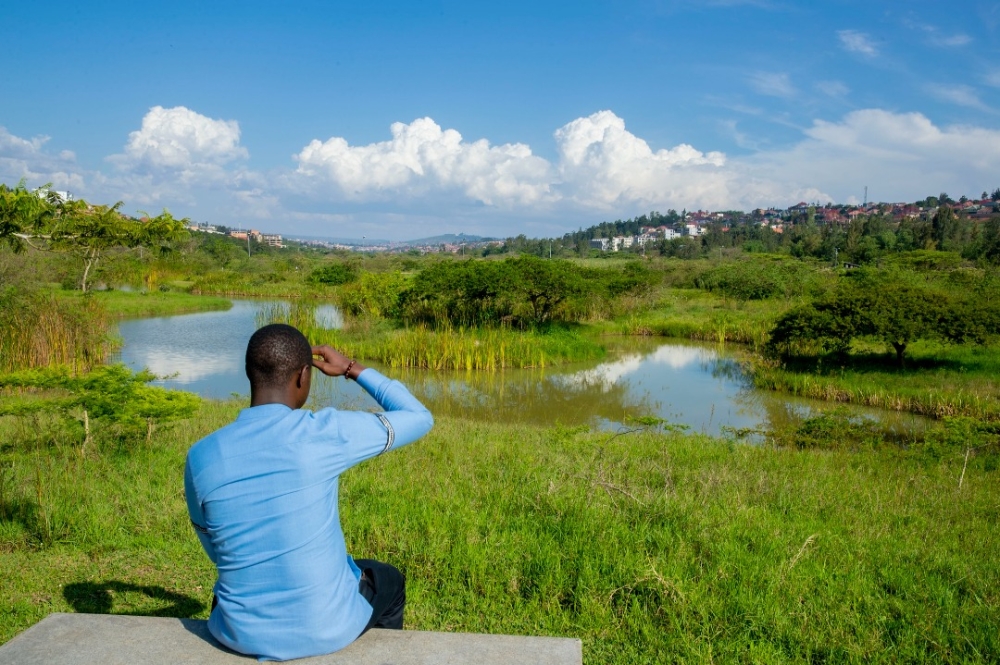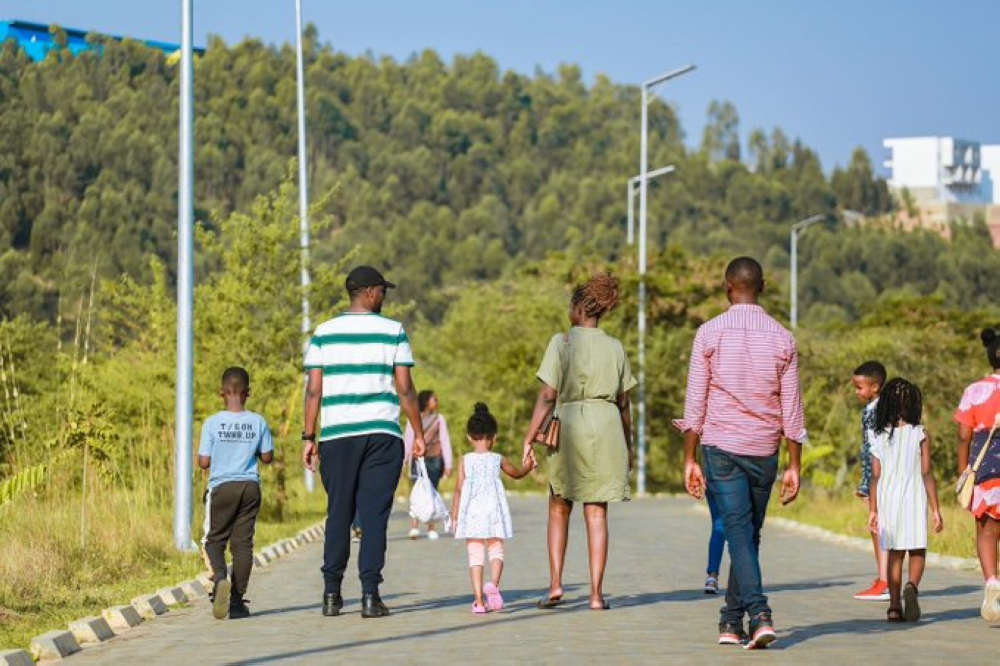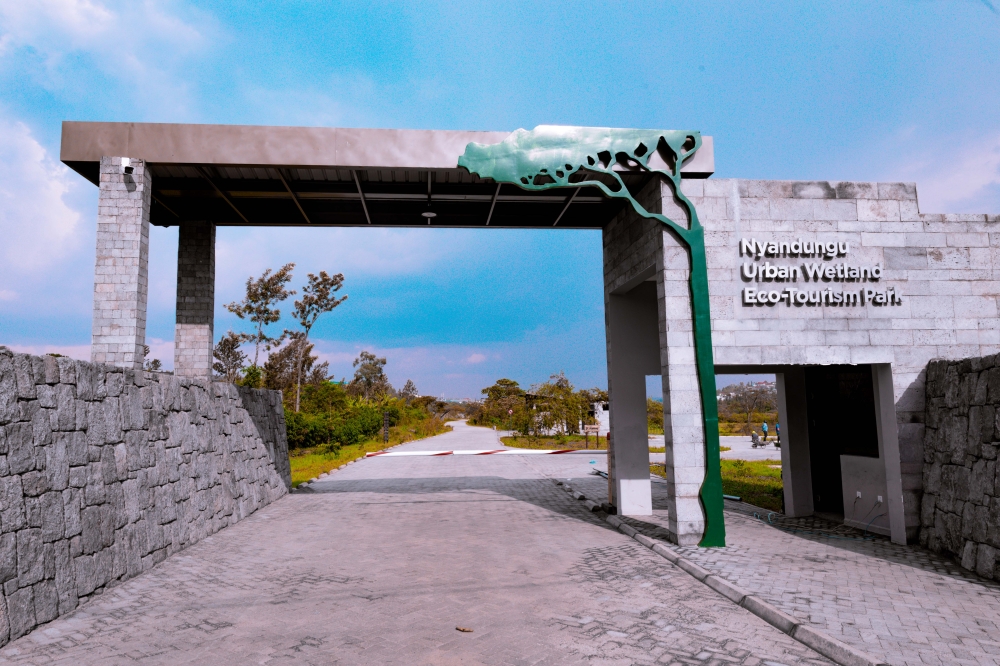Conservation experts are researching amphibians, such as frogs, and how they can help figure out how to restore wetlands and make them handle changes in the weather better.
A 2020 study indicated that over 40 per cent of Rwanda’s wetlands have lost their quality due to encroachment. The researchers said that rehabilitating more wetlands using innovative approaches could help Rwanda mitigate climate change and adapt to its effects.
ALSO READ: Kigali City wetlands could generate over $155m annually
The need was expressed at a time when Rwanda is sharing the “plan to expand protected areas and restore wetlands to promote biodiversity conservation” at the ongoing 28th UN Climate Change Conference known as COP28 in Dubai, UAE.
Mapendo Mindje, a researcher from the University of Rwanda, said: “The decline of specific amphibian species in areas like wetlands signifies degradation or alterations in these ecosystems, demanding immediate attention from policymakers for necessary intervention.”
ALSO READ: Rwanda secures $15 million to rehabilitate 400 hectares of wetlands in Kigali
He said amphibians are biological indicators for changes in wetlands’ health. “There are 17 amphibian species used as excellent indicators of disturbed wetlands and remaining species occurring mainly in wetlands of protected areas.”
Researchers said there is a need to study amphibians (like frogs) in Rwanda more to understand how they are affected by changes in wetlands. This information can help policymakers make better decisions about how to protect and manage wetlands in Rwanda.
Wetland conservation in building climate resilience
According to conservation experts, to prevent climate change, healthy wetlands capture carbon emissions from the atmosphere, making them nature’s solution to the climate emergency.

The conserved wetlands store more carbon than any other ecosystem on earth, and peat lands alone ‘store twice as much as all the world’s forests’.
Conserving wetlands stabilises coastlines, buffers against extreme weather events such as floods to build climate resilience, and reduces the risk of soil erosion.
ALSO READ: Swamps are to Rwanda what kidneys are to humans
For instance, the rehabilitation of five degraded wetlands in Kigali could, directly and indirectly, benefit 220,500 people who are at risk of flooding and water crises.
“When we invest in climate action, we are also investing in conservation, innovation, agricultural productivity, and cleaner energy. Rwanda welcomes green investment as we work to achieve our Vision 2050 to be a climate resilient and carbon neutral economy by 2050,” said Francis Gatare, CEO of Rwanda Development Board.
Wetlands and adaptation funding
Between 1970 and 2015, approximately 35 per cent of the world’s wetlands were lost, and the destruction of wetlands is accelerating, reducing their capacity to strengthen adaptation to climate change effects.
In this context, Rwanda, Africa, and civil society organisations are negotiating doubled adaptation funding at COP28 to invest in projects such as wetland restoration to build resilience to climate change effects such as floods and droughts.
“Over the next two weeks, Rwanda’s delegation will call for more ambitious climate action and a doubling of funding for adaptation, and share why Rwanda is an ideal destination for green investment,” a statement by the Ministry of Environment reads in part.
Rwanda’s delegation at COP28 includes representatives from government institutions, development banks, the private sector, and civil society — all united in their commitment to address climate change and advance sustainable development.
“We want a COP of transformational actions. COP28 will be a success if we see the Loss and Damage Fund operational, and if the global stocktake leads to faster emissions cuts by the major polluters. That’s the only way to keep the 1.5-degree goal alive. Rwanda’s priority is to showcase the solutions we have committed to scale up green growth and play our role to enhance the resilience of Rwanda,” said Jeanne d’Arc Mujawamariya, Minister of Environment, Rwanda.
Rwanda’s progress on wetland restoration
Restoration of the Nyandungu wetland for eco-tourism in the City of Kigali and the Rugezi wetland in Northern Province are among the main achievements in wetland rehabilitation and conservation.

Rugezi wetland is a peat land located in Burera and Gicumbi districts in Northern Province, covering about 7,000 hectares.
It has been classified by BirdLife International as one of seven important bird areas that accommodate threatened bird species including the Bradypterus graueri (songbird species) and the Grey Crowned Crane.
The wetland is one of Rwanda’s strategic water resources and plays a critical role in regulating and filtering water flows into Lake Burera and Lake Ruhondo, which feed two of the country’s largest hydropower plants, Ntaruka and Mukungwa.
Rugezi was designated as a Ramsar site in 2006, signifying its international importance under the Ramsar Convention on Wetlands Conservation.
Nyandungu Urban Wetland Eco-tourism Park was rehabilitated under the financing from Rwanda Green Fund. Rwanda will present 10 years of impact by the Rwanda Green Fund at the climate summit in Dubai.
The Nyandungu Eco-Park was also highlighted among the fund’s achievements. This was transformed from a degraded wetland into an educational and recreational eco-park in the heart of Rwanda’s capital city.

This project, costing $4.5 million, featured the planting of 17,000 trees and various amenities, including a medicinal garden, catchment ponds, recreation ponds, an information centre, a restaurant, and extensive walkways and bike lanes.
According to the Rwanda Environment Management Authority (REMA), five more wetlands in Kigali will soon be rehabilitated.
These include Kibumba, Nyabugogo, Rugenge-Rwintare, Rwampara, and Gikondo.
Rwanda has about 1,000 marshlands covering 10.6 per cent of the country’s surface area, and over 20 per cent of Kigali’s wetlands need rehabilitation.
Currently, the level of pressure from threats to the biodiversity of the wetlands is at 65 per cent.
This story by Michel Nkurunziza, was produced with support, from MESHA and IDRC Eastern and Southern Africa Office, to science journalists covering COP28.





